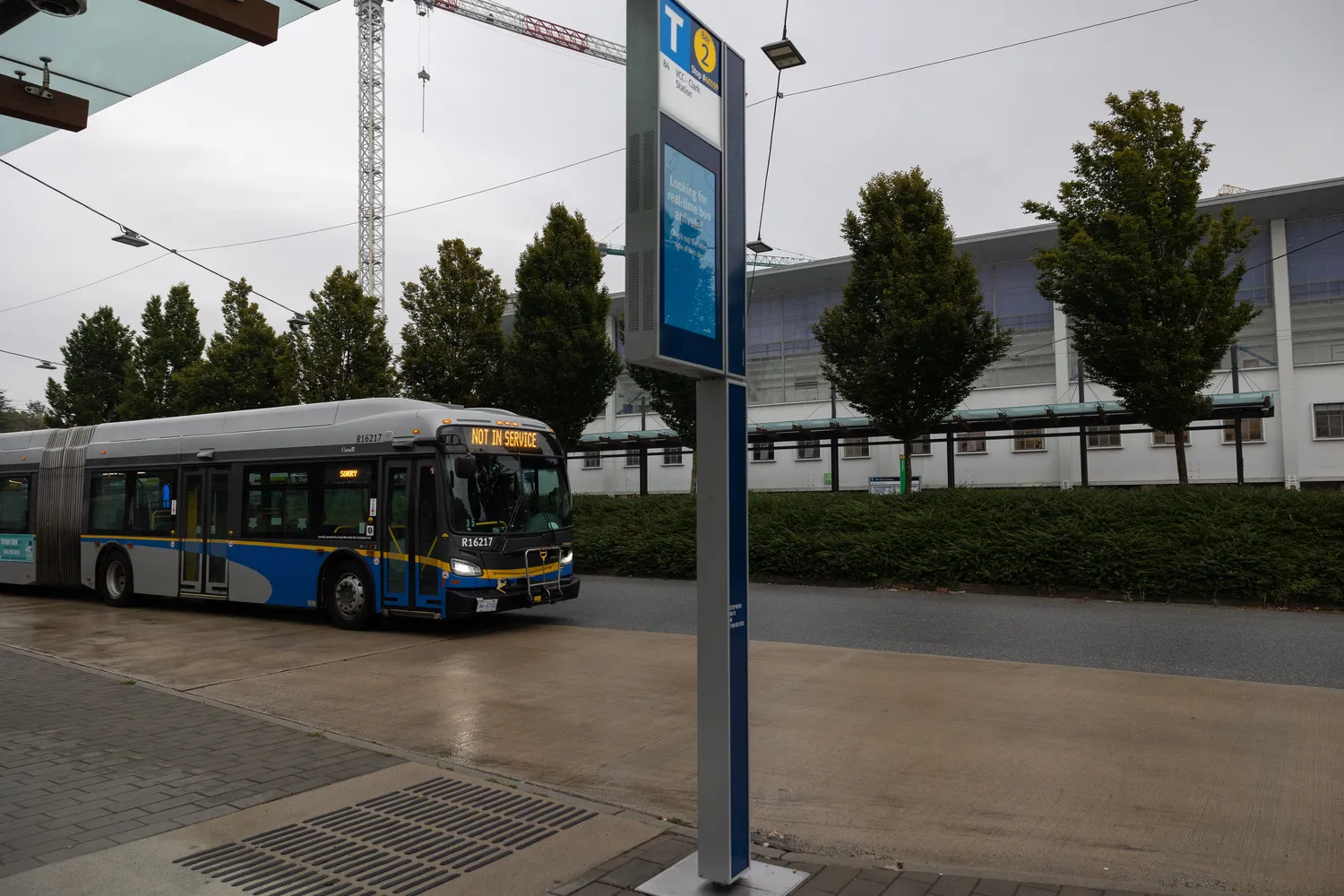On September 4, UBC’s transit network changed from TransLink's summer schedule to its fall schedule.
Here’s a breakdown.
- The trolley loop will reopen, allowing the 4, 14, and 9 to terminate at UBC instead of the Blanca Loop. Riders from UBC can now reach downtown from campus on weekends and later into weekday evening.
- TheHandyDART, an accessible transit service, will also be returning to the trolley bus loop.
- With the return of the trolley buses, the 99 B-Line will no longer be serving stops between Alison Road and Sasamat Street.
- In response to a popular petition, TransLink has reinstated a non-stop service from UBC to Dundarave, West Vancouver. This bus route will be an extension of the 44, with some morning and afternoon buses moving their terminus from downtown to Dundarave.
“This is really exciting, particularly for students and customers in West Van because it's been a little bit of a challenge at times for students to go and have that direct route,” said Thor Diakow, TransLink’s senior media relations advisor, on the 44 extension.
The 44 UBC/Downtown/Dundarave replaces the 258 UBC/West Vancouver, which linked West Vancouver directly to UBC. The 258 was suspended in 2020 as part of TransLink’s pandemic service cuts.
“There were a lot of calls to bring some kind of service between UBC and West Vancouver, a more direct service back, and we had a lot of consultation with the City of West Vancouver, stakeholders, and to students and people that really rely on that. So that's where we're also bringing it back.”
The extended 44 route will run at 6:58 a.m., 7:58 a.m. and 8:58 a.m to UBC and at 3:05 p.m., 4:05 p.m. and 5:05 p.m. to West Vancouver.
Another discontinued service with calls to return is the 480, which linked Bridgeport Station to UBC. The AMS VP external office has been advocating for its return.
Diakow reaffirmed that this service will not be returning for the foreseeable future.
“There are other alternatives for that service between Richmond and UBC including the Canada line, and there's numerous buses that just students and customers can rely on.”
Diakow pointed to R4 Rapid Bus, launched in 2020, as a strong alternative service with "higher frequencies for UBC students travelling to and from Richmond."
"This option is more frequent than the 480 and can be faster during rush hours because the SkyTrain doesn’t compete with bridge traffic,” added Diakow.
Other buses like the 25 and 49 will also have service adjustments, with frequencies being higher during peak hours and lower during off-peak hours.
UBC residents may have also spotted surveys posted across campus to improve the 49.
The survey is not run by TransLink, but by “two transit riders frustrated with the quality of service on the 49 route, who want to see the bus route become better for everyone.”
The survey requests improvements like more bus shelters, later service and changes to avoid “bunched” buses.
Diakow said bus shelters are the responsibility of the municipality and that TransLink does not have authority over them. It is solely responsible for the bus pole itself and any kind of signage on the pole.
Diakow also said that issues beyond TransLink’s control were at hand for many of the cited issues in the survey, such as traffic and construction causing buses to back up.
Service on the 49 route is set to be reduced from 7 p.m. onward and service in the morning and afternoon is set to be increased.
The Ubyssey reached out to VP External Tina Tong, but did not hear back by publishing time.
Share this article
First online





